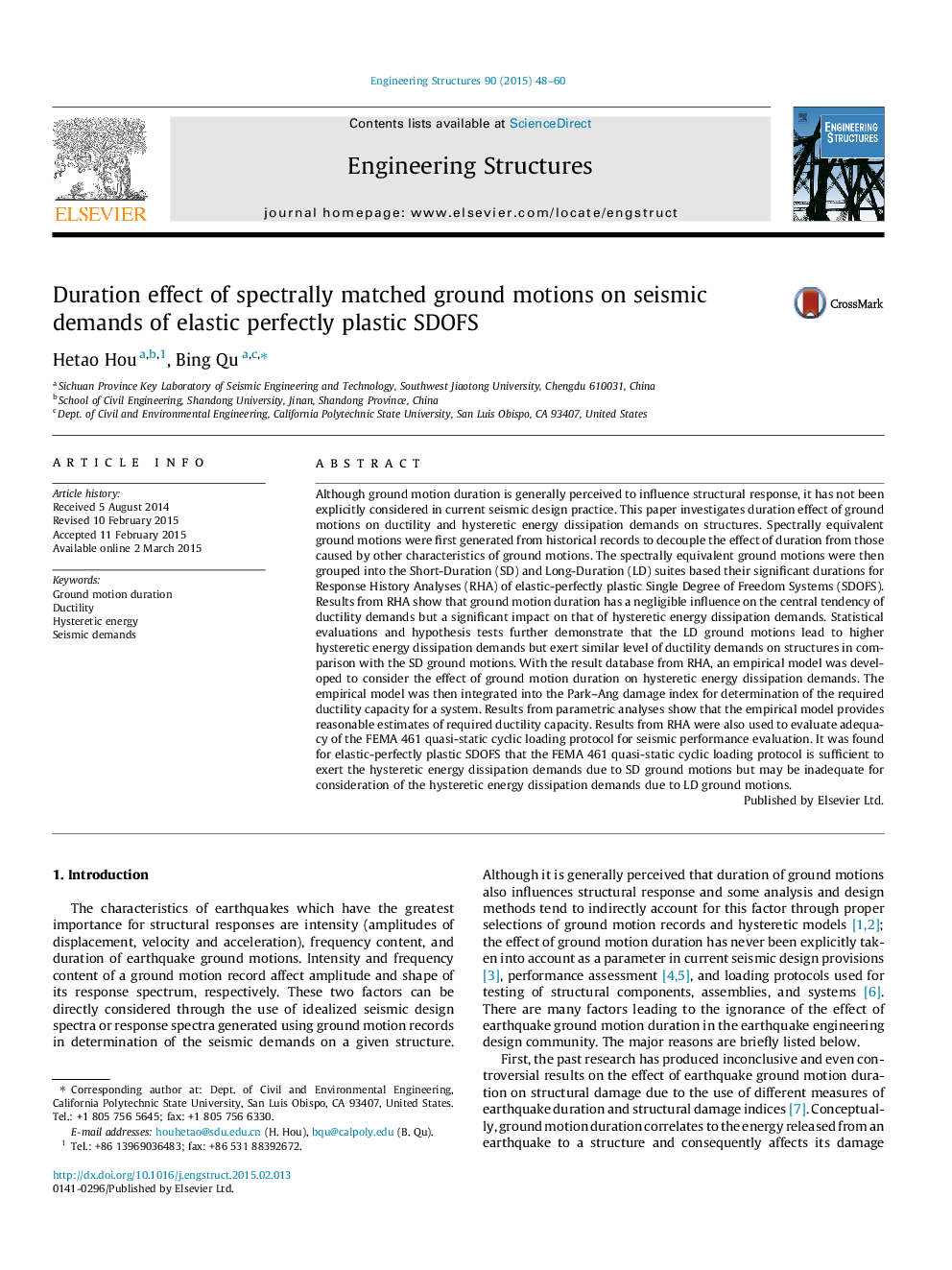| Article ID | Journal | Published Year | Pages | File Type |
|---|---|---|---|---|
| 266247 | Engineering Structures | 2015 | 13 Pages |
•Earthquake duration has a negligible impact on ductility demands.•Earthquake duration significantly affects hysteretic energy absorption demands.•Required ductility is higher than ductility demand due to energy absorption.•The FEMA 461 loading protocol may be inadequate for systems under LD earthquakes.
Although ground motion duration is generally perceived to influence structural response, it has not been explicitly considered in current seismic design practice. This paper investigates duration effect of ground motions on ductility and hysteretic energy dissipation demands on structures. Spectrally equivalent ground motions were first generated from historical records to decouple the effect of duration from those caused by other characteristics of ground motions. The spectrally equivalent ground motions were then grouped into the Short-Duration (SD) and Long-Duration (LD) suites based their significant durations for Response History Analyses (RHA) of elastic-perfectly plastic Single Degree of Freedom Systems (SDOFS). Results from RHA show that ground motion duration has a negligible influence on the central tendency of ductility demands but a significant impact on that of hysteretic energy dissipation demands. Statistical evaluations and hypothesis tests further demonstrate that the LD ground motions lead to higher hysteretic energy dissipation demands but exert similar level of ductility demands on structures in comparison with the SD ground motions. With the result database from RHA, an empirical model was developed to consider the effect of ground motion duration on hysteretic energy dissipation demands. The empirical model was then integrated into the Park–Ang damage index for determination of the required ductility capacity for a system. Results from parametric analyses show that the empirical model provides reasonable estimates of required ductility capacity. Results from RHA were also used to evaluate adequacy of the FEMA 461 quasi-static cyclic loading protocol for seismic performance evaluation. It was found for elastic-perfectly plastic SDOFS that the FEMA 461 quasi-static cyclic loading protocol is sufficient to exert the hysteretic energy dissipation demands due to SD ground motions but may be inadequate for consideration of the hysteretic energy dissipation demands due to LD ground motions.
